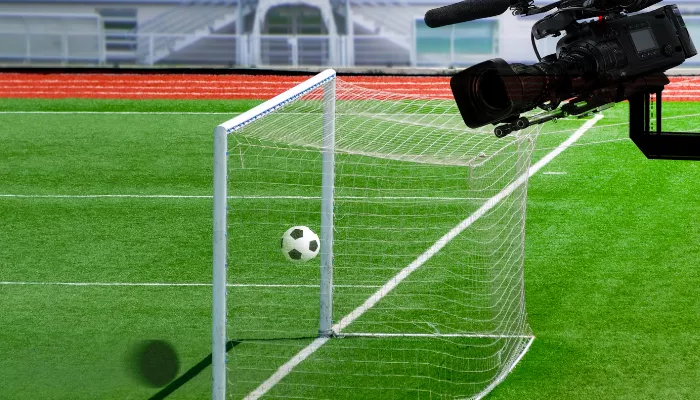
Without a doubt, with the advancement of technology, several improvements occur every day. Therefore, it is no secret that they have been applied to several sports, including football. Therefore, check the 3 technologies that help referees in football matches. Know that these technologies have proven to be very useful on several occasions and have helped referees make the right decision.
Furthermore, the famous football and the emotion of this beautiful and fascinating game brings together fans from all over the world. Above all, it is important to remember that a few years ago, these technologies in the 2018 World Cup games were almost as surprising as the athletes themselves.
Therefore, everyone knows that technology can create controversies and disputes in a sport that is already full of passionate fans. So for a few years now, a new video assistant referee (VAR) has been among the most loved and hated new technology in football.

Now, one of the most promising prospects has been the use of a “smart ball” embedded with a sensor. The ball was developed in conjunction with German corporations Cairos Technologies and Adidas. In addition, the technology uses a network of receivers around the field, which are designed to track the precise position of the ball in real time.
This way, it is also included exactly when she crossed the goal line with complete precision. What's more, referees will always be notified when the ball crosses the goal line. With this, the information will be available on a smartwatch receiver according to the referee.
Furthermore, absolutely all official match balls are used in the European Leagues, MLS and other American Leagues. Therefore, most African Leagues are smart balls.
Most of the time, being able to know whether it was a goal or not is an important part of any referee's job. With this in mind, Goal-Line technology began at the 2014 World Cup in Brazil. Furthermore, it was also an important part of the technology used a few years ago in Russia at the 2018 World Cup.
Thus, using GLT (Goal-Line) technology, on average 14 cameras record up to around 500 frames per second. Then, they send the image to a type of image processing system. Then, the 3D coordinates of the ball are monitored, and when the entire ball crosses the goal line, the camera captures it and sends a signal to the referee's watch. Furthermore, GoalControl also provides the technology in the main football competitions around the world, as it did in Brazil.
However, there are some principles necessary for a successful goal line system. Therefore, the technology can only be applied to decisions on the goal line, the system must be 100% accurate, the signal sent to the referee must be instantaneous. However, this signal will only be communicated to the referees.
Lastly, this system was started by the British company Hawk-Eye Innovations Ltd in 2001. And it had very successful tests. As a result, it leads the ranking of systems currently under development. Furthermore, the system has already been tested in several other sports. However, the football version is being extensively tested and has excellent performance in a test environment.
In this way, the Hawk-Eye system works using three cameras focused on each goal line and each filming at 600 frames per second. In this way, Hawk-Eye can make an accurate decision as to whether the ball has fully crossed the line and send this information in the form of an audible beep to the central referee within milliseconds.
In today's article, you saw the 3 technologies that help referees in football matches and how these technologies have transformed our daily lives on a daily basis. In this sense, these changes end up affecting the sporting scene as well.
Therefore, they include more resistant fabrics, more durable materials, more accurate ways of evaluating passes and even practicing exercises at home. However, these are just some of the innovations that technological advances have brought to the world of sports.